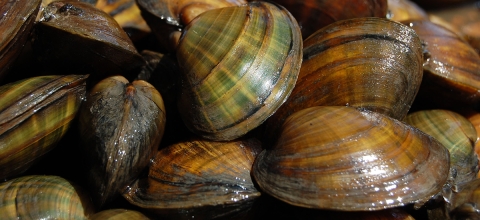Endangered Species Act Milestones: 1970s
The decade that saw the breakup of the Beatles and the wind-down of the Vietnam War also witnessed the environmental movement gain rapid momentum. While mood rings, lava lamps, Rubik's cubes, and pet rocks captured the imagination of Americans, issues concerning air and water pollution, and endangered wildlife, climbed to the forefront of American attention. In response to growing concern for the environment, Congress created the Environmental Protection Agency in 1970. Passage of break-through environmental laws soon followed, including the Clean Air Act of 1970, the Clean Water Act of 1972, and the Endangered Species Act of 1973.
1970
- Congress establishes the Environmental Protection Agency to consolidate, into one agency, a variety of federal research, monitoring, standard-setting and enforcement activities to ensure environmental protection.
- The peregrine falcon is listed as endangered—a victim of the pesticide DDT, which caused eggshell thinning and prevented breeding success.
- The Pentagon, which uses sperm-whale oil in submarines, protests the listing of sperm whales as endangered, arguing that the species was not in any immediate danger of extinction. The Secretary of the Interior lists it anyway, but the fight convinces Interior officials that a new, stronger law is needed.
- The first marine reptiles – the leatherback sea turtle, hawksbill sea turtle, and Kemp's ridley sea turtle – are listed as endangered.
- The Bureau of Commercial Fisheries, an agency in the U.S. Fish and Wildlife Service (Service), is transferred to the Department of Commerce and renamed the National Marine Fisheries Service (NMFS).
1972
- The Environmental Protection Agency outlaws the use of DDT in the U.S. because of its potential danger to both people and to wildlife, including the bald eagle, peregrine falcon, and brown pelican.
- Congress passes the Marine Mammal Protection Act on behalf of whales, sea otters, porpoises, polar bears, sea lions, and manatees.
- Congress passes the Clean Water Act.
1973
- Eighty nations sign the Convention on International Trade in Endangered Species of Wild Fauna and Flora to protect plant and animal species by regulating imports and exports.
- President Richard Nixon signs the Endangered Species Act, which supersedes earlier acts, into law.
1975
- The Smithsonian Institution, in keeping with a provision of the ESA to identify plant species in need of protection, produces a report proposing more than 3,000 species for possible listing as endangered or threatened.
- The Service emergency-lists as endangered the snail darter, a three-inch-long fish in the Little Tennessee River, because of the threat of flooding cause by the construction of the Tellico Dam.
1976
- The first invertebrate species gain federal protection: 21 clams and 7 insects.
1977
- The first plant species are listed as endangered—the San Clemente Island paintbrush, San Clemente Island larkspur, San Clemente Island broom, and San Clemente Island bush-mallow.
1978
- Congress passes the ESA Amendments of 1978, formalizing the process under section 7 by which federal agencies consult with the Service to ensure that their actions are not likely to jeopardize the survival of listed species or adversely modify the habitat areas that are essential for their recovery.
- Congress creates a Cabinet-level Endangered Species Committee authorized to allow exemptions to prohibitions of the ESA.
- The first recovery plan is published for the Kirtland's warbler.
- The Endangered Species Committee exempts the Grayrocks reservoir project in Wyoming from section 7 of the ESA.
- In Tennessee Valley Authority v. Hill, 437 US153, the Supreme Court finds the Tennessee Valley Authority in violation of the ESA by building a dam that would threaten the continued survival of the snail darter, an endangered fish.
- The Service proposes to list San Diego mesa mint, an annual herb in the mint family that is restricted to vernal pools in southern California, after one of the three known populations at the time is threatened by a planned subdivision that would be partly built with a Veterans Administration loan guarantee.
1979
- The Veterans Administration informs the developer that, if San Diego mesa mint is listed, it would not be able to make the loan guarantee. A few days before the plant gains federal protection, the developer bulldozes the plants, and the loan guarantee goes through.
- Congress passes the Energy and Water Development Appropriations Act, exempting the Tellico Dam project from all federal law. As a result the habitat that is essential for snail darters' recovery is flooded. Other populations of the snail darter are later found in other rivers.
- The Service announces plans to capture the last remaining California condors to form a captive breeding flock—a "last ditch effort" to save the species from extinction.




